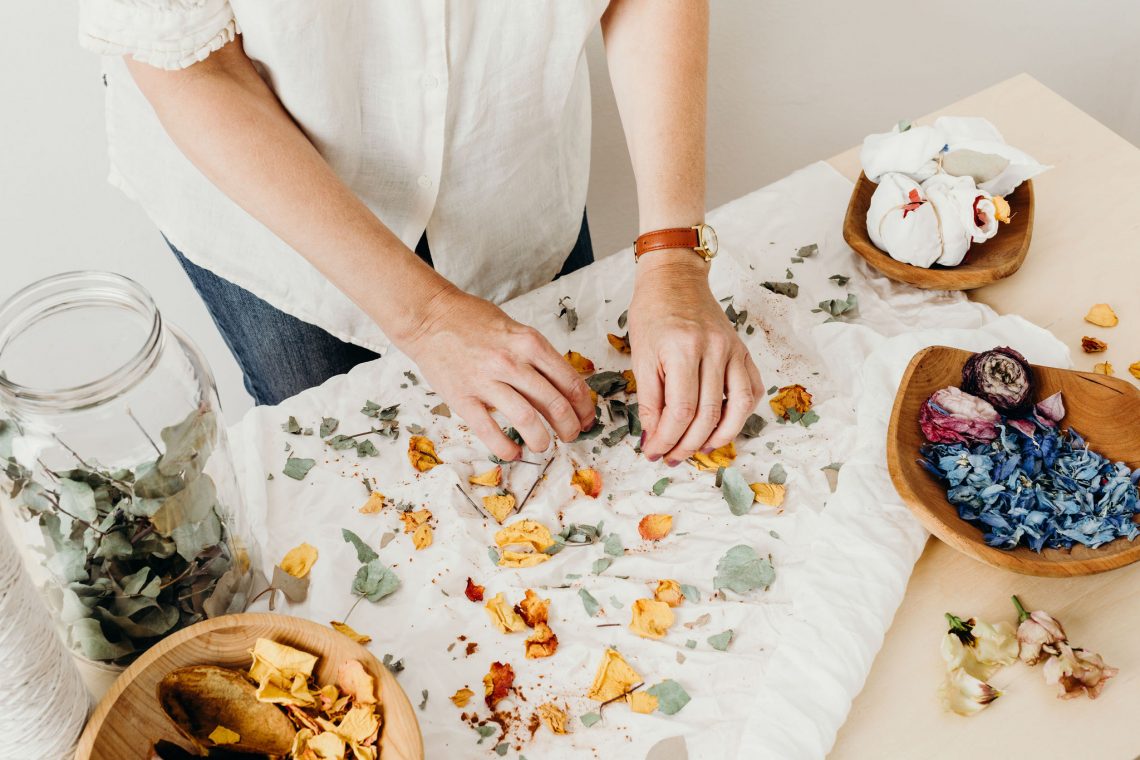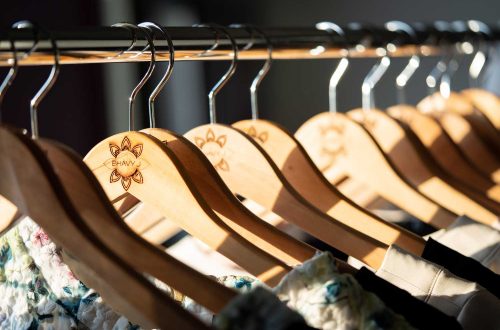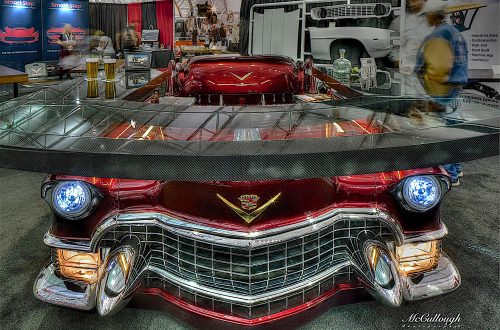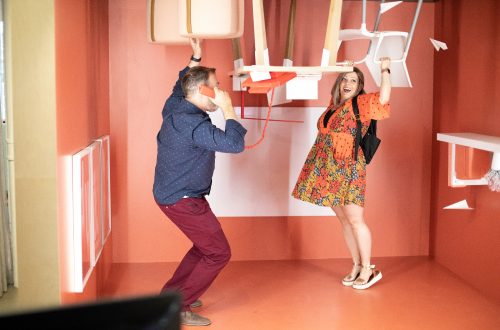From daytime textile designers to moonlighting developers of sustainably dyed fabrics, the trio behind the Grand Rapids, Michigan-based Eso Studio are driven by a passion for textile design that has come to include equal parts art and science. Inspired by the renewal energy of nature and committed to the act of reusing, the designers form a studio dedicated to natural, hand-worked dyeing processes that have been used to design sustainable textiles for hundreds of centuries.
Their individual expertise spans the interiors and textile industries, from a Midwest handbag company and international brands like Chanel and Louis Vuitton to a commission for the White House Family Dining Room, and it was a shared interest that drew them together while working for a luxury carpet maker in Grand Rapids. By 2017, the three would combine an appreciation for the natural and handmade with the launch of Eso Studio.
“I think what interested us and drew us to carpet design in the first place was that it is tactile and you can get your hands on it, which is what we’re doing with the printing,” said Ann Cole, co-founder of Est Studio. “It’s also atmospheric; it’s about creating an environment and atmosphere.”
From a collaboration born out of an after-work-hours-interest and creative experimentation with dyed scarves and home décor, Eso Studio has since expanded its work to encompass wallpaper, framed art, bedding, and silk scarves utilizing natural fiber and a natural hand dyeing process. In their studio, the designers fully invest in their passions for sustainability, especially as those who are familiar with the cost of unsustainable practices in other industries like textiles and even, as Hannah Amodeo, co-founder of Eso Studio, noted, the food and restaurant industries.
“In careers as textile designers, you see the waste and it can make your heart hurt, so in starting our own business, [sustainability] was the first thing on our list, knowing this is a priority, and we need to be conscious of this. It’s all about the choices we make, and we have control over it,” Amodeo said.
“On the other side, growing up in a restaurant, there is the food waste aspect of it too. If we can do something with these items that are otherwise going to be trashed, why not? With our natural dyeing you get beautiful colors and patterns off these basically trash materials and it’s another level of inspiration for us,” Amodeo added.
The materials Eso Studio utilizes in their dyeing process are sourced from Amodeo’s family restaurant, florists, local businesses, and even individuals who want to contribute to the studio’s process. Natural materials like plants, minerals, and even avocado stones and onion skins—which yield a soft pink dye and deep rust hue, respectively—create unique pigments that, when used in tandem with natural fiber like silk and wool, offer a lasting piece of natural design to invigorate interiors with renewed designs.
As with many other methods of sustainable design, particularly reuse, the materials creating a given design have already been chosen simply by existing, and thus the work of the designer involves stepping back for unique, pre-established chemical processes to take place before personal or creative goals are introduced into the procedure.
“It’s truly just letting [dye and materials] do their thing and then the creative process almost starts from there for the next part of it,” said Jamie Crawford, co-founder of Eso Studio.
Frequently, the designers utilize a bundle dyeing method—Amodeo’s personal favorite—to create their singular designs. Flower petals collected from local florists, for example, are laid on natural fabric like silk, then arranged and combined with different ingredients such as lemon juice that will change the level of their acidity, and therefore color. Next, the team applies steam or lets the fabric sit before revealing the outcome of each process, which can be repeated for deeper layering and visual dynamics.
Recently, the designers launched their first wallpaper collection derived from their naturally dyed textiles. The collection, Biophilia, is intended to bring the ethereal and restorative power of nature into interior environments, and its editions, such as Blueberry Crumble, Birch, and Tiger Eye, offer a range of styles that traverse the bold and atmospheric, but remain similar in their organic personalities. To bring these derived visions to paper, the studio utilizes a local wallpaper printer and favors panel wallpaper instead of the traditional rolled option to reduce paper waste.
A locally oriented studio since inception, the Eso Studio team is now also experimenting with other materials sourced close to home to create new products like repurposed furnishings and the designers hope to add upholstery fabric to their portfolio as well. As the team looks ahead and to future projects like using natural wool velvets, wood stained with turmeric, or wood ebonized with steel and vinegar, Eso Studio continues to forge a thoughtful path into the ever-evolving and -relevant realm of sustainability.
“There’s so much in the world to be kept and made something out of,” Crawford said. “We don’t need to create more. There’s really a lot we can do with what we have; that’s one of our favorite challenges.”
Text: R. Collins
Photography: Oswald West | Eso Studio






